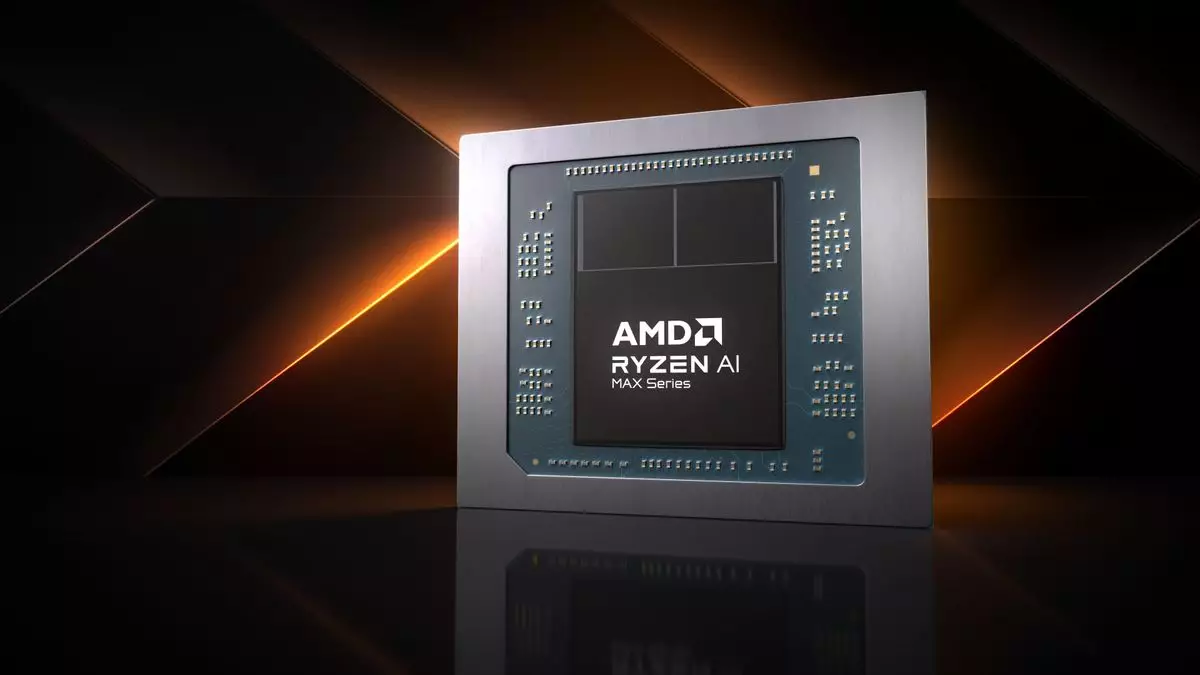AMD’s Strix Halo represents a significant step in the evolution of Accelerated Processing Units (APUs), combining advanced graphics capabilities with impressive CPU performance. Recent benchmarks from 3DMark Time Spy have given tech enthusiasts a glimpse into the capabilities of this highly anticipated chip. Initial results appear to align with previous Geekbench tests, setting the stage for discussions about its potential in the competitive landscape dominated by both AMD and its perennial rival, Intel.
While early indicators can often paint an overly optimistic picture, the performance metrics of the Strix Halo thus far suggest it may underperform compared to lofty expectations. A post on the Baidu forums revealed speculation about its integrated GPU—thought to be the Radeon 8050S—but evidence suggests it might actually be the more robust AI Max+ 395, indicating a potential mix-up in reported specifications. This discrepancy is likely due to prelaunch phases, where misrepresentations in software or data can happen.
The benchmarks show the APU achieving a GPU score of 10,106 and a CPU score of 5,571. To put this into perspective, the APU’s GPU performance appears to surpass the average scores for laptop RTX 4050s by around 2,000 points, while trailing slightly behind RTX 4060s. Although 3DMark is a valuable tool for assessing graphical capabilities, it does not encompass the entire gaming experience, making it just one of many critical metrics to watch.
What is most exciting about the Strix Halo is its potential to redefine expectations surrounding integrated graphics. Unlike discrete GPU systems, this APU aims to offer performance levels akin to an RTX 4060 without the additional power draw of an external card. This efficiency in power usage could be pivotal for gaming laptops, especially with battery longevity becoming increasingly vital among consumers who prioritize mobility alongside performance.
Initial projections suggested that AMD’s flagship APU could compete with an RTX 4070—projections fueled by its advanced architecture and increased graphical cores. However, current benchmarks place it more accurately in line with the RTX 4060. This evolution in expectations is a reality check for AMD enthusiasts, emphasizing that while the integrated GPU showcases impressive capabilities, it may not completely dethrone existing discrete solutions in high-end gaming scenarios.
The integrated nature of the Strix Halo presents advantages, but it does not come without its compromises. AMD’s struggle during development—evident from the reported four iterations—affirms the challenges in advancing APU technology. Each adjustment necessitated finding the right balance between performance and power efficiency, underscoring the APU’s bespoke engineering. Utilizing customized Zen 5 CPU CCDs and novel interconnect methodologies highlights AMD’s determination to innovate within a rigid framework of hardware limitations.
The Strix Halo introduces a power configuration option extending up to 120 watts, which presents another layer of complexity. Changes in wattage can yield significant leaps in performance, but this variability poses questions about real-world application and thermal management. For gaming laptops, finding the sweet spot for power consumption without compromising performance becomes critical.
In a market where every frame per second counts, this aspect of the APU design will be closely monitored. If AMD can capitalize on this balance, they could potentially deliver a performance profile that meets the evolving demands of gamers. However, if this performance comes at the cost of battery life, the trade-offs could undermine the overall user experience, particularly for portable devices.
With the Strix Halo APU, AMD appears to be charting a promising course, though its journey will be scrutinized closely by the gaming community. The device holds the potential to redefine integrated graphics performance, but as early benchmarks suggest, it will need to address expectations managed by the avid gamer community. As the launch approaches, the anticipation continues to build as consumers and industry analysts alike look for AMD to deliver on its promises. Only time will tell if this bold step will secure its position within the competitive APU market landscape.


Leave a Reply